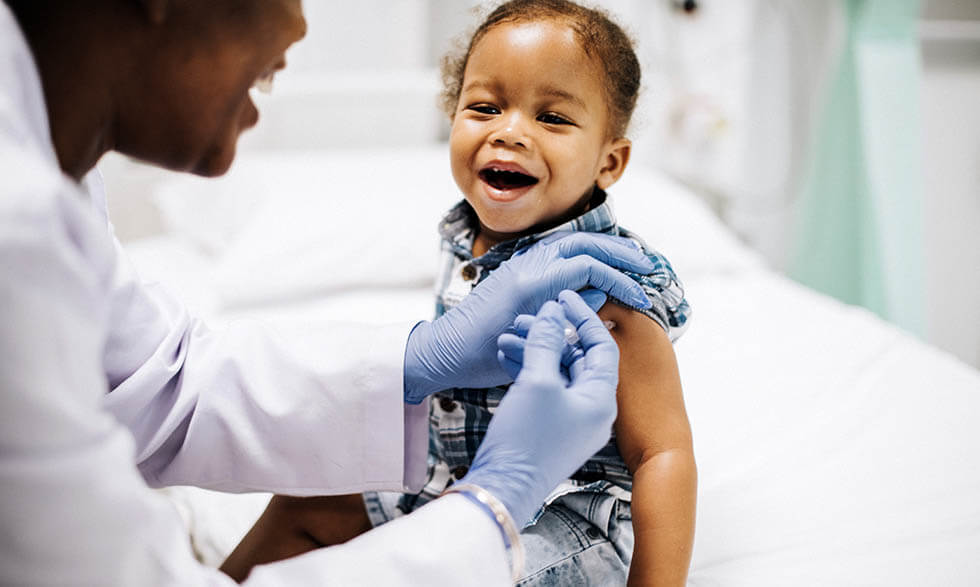
August is National Immunization Awareness Month, which brings attention to the value of protecting yourself and your family from vaccine-preventable diseases like chickenpox and the flu.
Vaccines help control and sometimes get rid of diseases like measles or polio that in years past sickened or killed many people. They offer protection from viruses and bacteria that can make us very sick.
Vaccine research is a priority for the National Institute of Allergy and Infectious Diseases. It supports research to identify potential vaccines for a variety of emerging infectious diseases, including COVID-19, Zika virus, and HIV/AIDS.
Helping our immune systems work better
“Vaccines help control and sometimes get rid of diseases like measles or polio.”
Your immune system is a complex network of cells, tissues, and organs that works together to protect your body. A strong immune system will detect foreign substances—like harmful bacteria and viruses—and attack them. A person with a weak immune system has a harder time fighting off these substances.
When you get a vaccine, it sparks your immune system to create immune responses that help your body fight off infection. This also helps your body react more quickly the next time the bacteria invades.
Getting vaccinated
Most vaccines are given as a shot into muscle or the skin by a health care professional. Some are also given through a liquid or spray in the mouth or nose.
Some vaccines may cause mild reactions, such as soreness where the shot was given, a rash, or a fever. But serious reactions are rare. Your health care provider should review your medical history before giving vaccines to you or a family member.
Keeping kids and adults healthy
Some people with weakened immune systems or those who are pregnant may not be able to get vaccines. This is why getting vaccinated not only helps you, but others in the community too. This type of protection is known as “community immunity.” For this reason, proof of vaccination is often needed before your child can enter school or child care.
So, before you enroll your child in school or drop them off at college, talk to your doctor to make sure their immunization schedule is up to date.
| Disease | Vaccination |
|---|---|
| Acellular pertussis | Tdap1 |
| Chickenpox | Varicella |
| Diphtheria | DTaP2; Tdap1 |
| Haemophilus influenzae type b (Hib) | Hib |
| Hepatitis A | HepA |
| Hepatitis B | HepB |
| Human papillomavirus | HPV |
| Influenza (Flu) | Flu |
| Measles | MMR3 |
| Meningococcal | MenACWY-D; MenACWY-CRM |
| Meningococcal B | MenB |
| Mumps | MMR3 |
| Pertussis | DTaP2 |
| Polio | IPV |
| Pneumococcal | PCV13 |
| Pneumococcal polysaccharide | PPSV23 |
| Rotavirus | RV |
| Rubella | MMR3 |
| Tetanus | DTaP2; Tdap1 |
1 Tdap combines protection against tetanus, diphtheria, and acellular pertussis. Tdap is for children 7 and older, adolescents, and adults.
2 DTaP combines protection against diphtheria, tetanus, and pertussis. DTaP is for children under the age of 7.
3 MMR combines protection against measles, mumps, and rubella.
